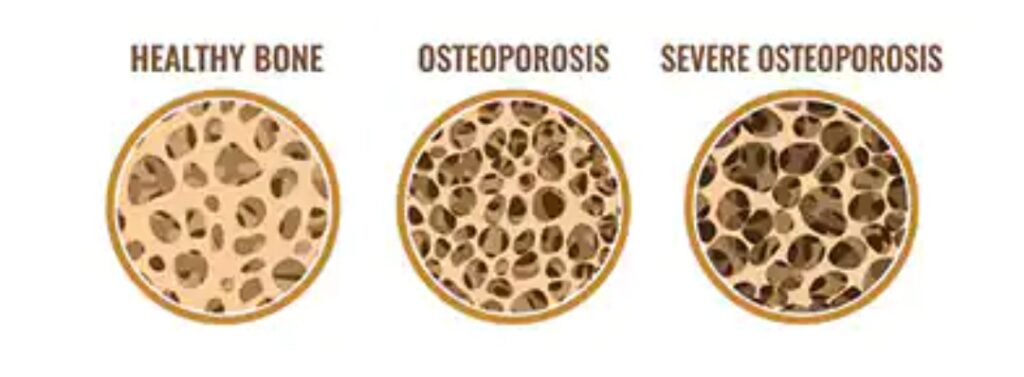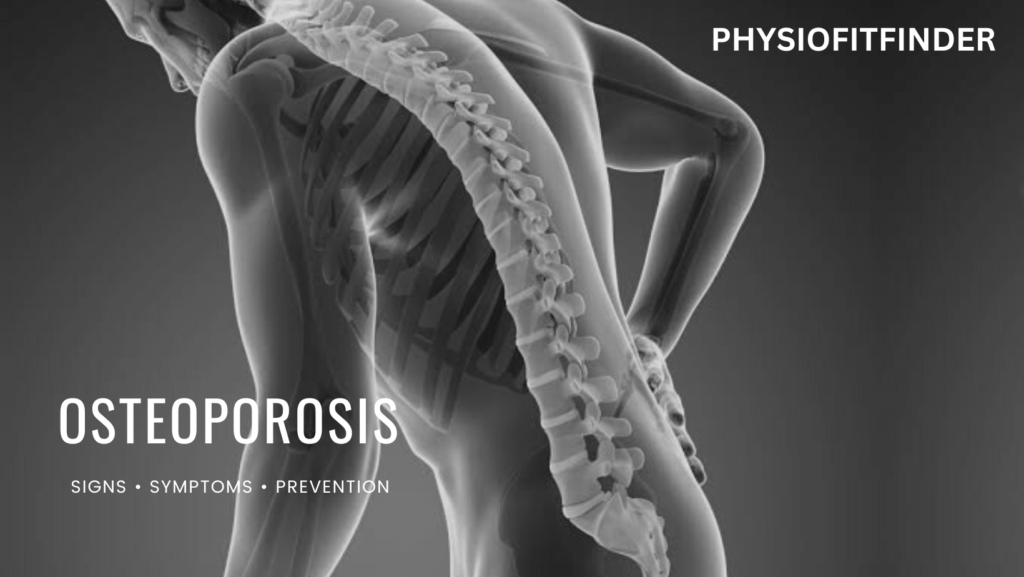Osteoporosis is a metabolic disorder characterized by a loss of bone density and mass, leading to weak and fragile bones. This condition makes bones more susceptible to fractures, even from minor falls or bumps.
Osteoporosis is a “silent” disease because you typically do not have symptoms, and you may not even know you have the disease until you break a bone(1).
It is the most common reason for a broken bone among the elderly(2). Bones may weaken to such a degree that a break may occur with minor stress or spontaneously.
Osteoporosis often develops gradually over time and affects women and men of all races and ethnic groups. Osteoporosis can occur at any age, although the risk for developing the disease increases as you get older. For many women, the disease begins to develop a year or two before menopause.

Sign & Symptoms of Osteoporosis
There are typically no noticeable symptoms in the early stages of osteoporosis, so many people don’t know they have the condition until they experience a fracture. But may experience few signs and symptoms that include :
- Back pain, caused by a fractured or collapsed vertebra.
- Loss of height over time.
- A stooped posture.
- A bone fracture that occurs much more easily than expected.
- Body ache (Rigor & malaise).
- Marked tender over Shine bone (Ant. Shaft of Tibia).
- Morning Stiffness.
Risk factors:
Risk factors for osteoporosis include age, gender (women are at higher risk), low body weight or small frame size, a family history of the condition, certain medical conditions (such as hyperthyroidism), and certain medications (such as long-term use of corticosteroids).
Diagnosis for Osteoporosis
Osteoporosis can be diagnosed using conventional radiography and by measuring the bone mineral density (BMD). The most popular method of measuring BMD is dual-energy X-ray absorptiometry.
Prevention for Osteoporosis
Prevention and treatment of osteoporosis can include lifestyle changes (such as regular exercise and a balanced diet with adequate calcium and vitamin D), medication to improve bone density, and measures to reduce the risk of falls.
Other ways to minimize the risk are:
- avoiding smoking, as this can reduce the growth of new bone and decrease estrogen levels in women.
- limiting alcohol intake to encourage healthy bones and prevent falls.
Regular Exercise
Exercise can help you build strong bones and slow bone loss. It will benefit your bones no matter when you start.
- Combine strength training exercises with weight-bearing and balance exercises.
- Exercises such as tai chi can reduce your risk of falling especially as you get older.
Balanced Diet
- dairy foods, such as milk, cheese, and yogurt
- green leafy vegetables, such as kale and broccoli
- fish with soft bones, such as tinned salmon and tuna
- fortified breakfast cereals
If a person’s calcium intake is inadequate, supplements are an option.
Related Video : FOODS TO BOOST BONE HEALTH
Medications
Bisphosphonates are antiresorptive drugs that slows bone loss and reduce a person’s fracture risk.
The goal of pharmacological therapy is to reduce the risk of fractures. Medications to treat osteoporosis are categorized as either antiresorptive (i.e., bisphosphonates, estrogen agonist/ antagonists [EAAs], estrogens, calcitonin, and denosumab) or anabolic (i.e., teriparatide)(3).
It is important to start taking steps to prevent osteoporosis as early as possible, but it is never too late to make positive changes to protect your bones.
